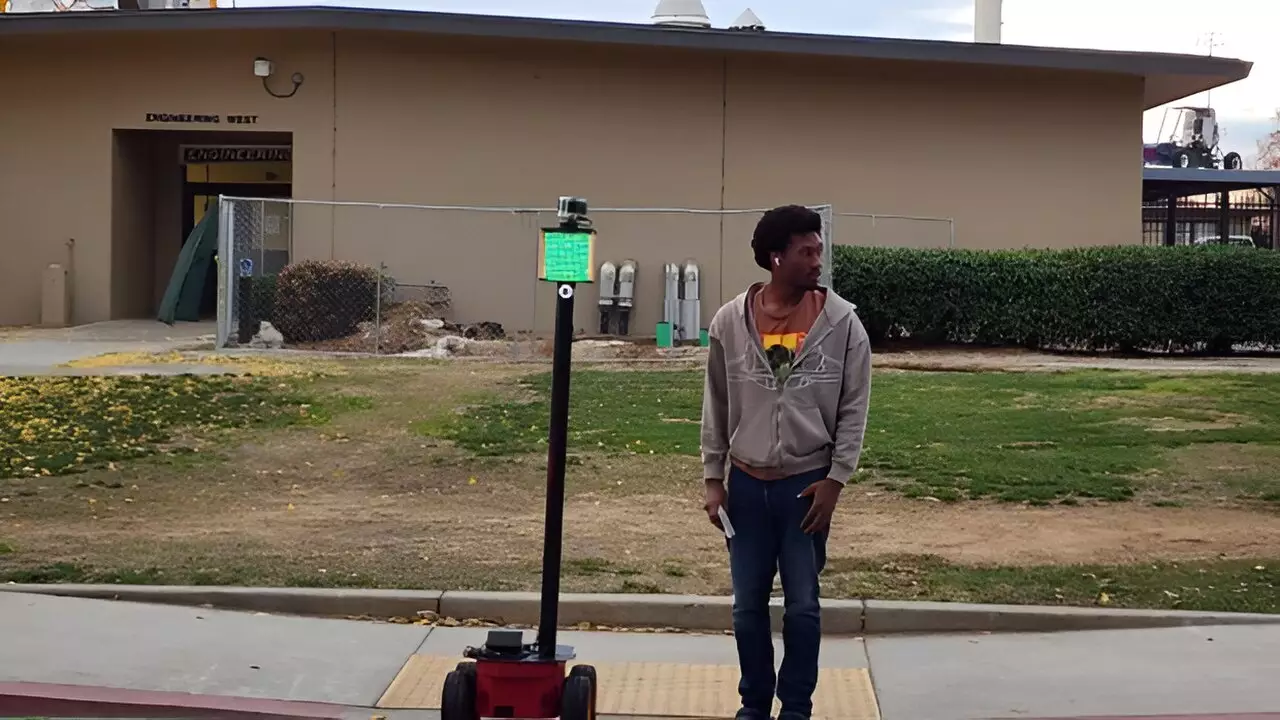The introduction of robotic crossing guards has sparked a heated debate among parents, educators, and community members. The brainchild behind this controversial idea is Hovannes Kulhandjian, an associate professor in electrical and computer engineering at Fresno State. His creation, CrossBot, is a prototype designed to assist children in safely crossing the street. The robot is equipped with sensors, including Lidar, a microphone, radar, video camera capabilities, a speaker system, and advanced algorithms. Kulhandjian emphasizes the importance of accuracy when dealing with the safety of children, stating that the robot has a 360-degree view of its environment to minimize errors.
Despite Kulhandjian’s confidence in CrossBot, not all parents are on board with the idea of robotic crossing guards. Some parents, such as Kelly Lathrop of Lafayette, express skepticism and mistrust in the reliability of a machine to replace human crossing guards. Lathrop highlights the personal connection and vigilance that human crossing guards provide, which she believes cannot be replicated by a robot. Similarly, Angela Roberts, a mother of two, acknowledges the turnover in crossing guards but remains skeptical of the effectiveness and safety of a robotic solution. She questions the potential for malfunctions or cyberattacks that could compromise the security of children.
The shortage of crossing guards in the Bay Area and other regions has been a growing concern in recent years. School districts in San Jose, Oakland, Los Altos, San Francisco, and Pleasant Hill have all reported difficulties in hiring and retaining crossing guards. The shift to distance learning during the pandemic further exacerbated the shortage, leading to days where intersections were left unattended. This shortage has raised questions about the practicality and feasibility of relying solely on human crossing guards to ensure pedestrian safety.
Pedestrian accidents, including car crashes, are a significant cause of injury and death among children and adults. The Governors Highway Safety Association reported a disturbing increase in pedestrian fatalities in recent years, with over 7,500 pedestrians killed by drivers in the latest data available. This rise in pedestrian deaths has fueled discussions about the role of technology, such as robotics, in enhancing pedestrian safety. The global robotics market is projected to reach nearly $96 billion by 2029, signaling a growing trend towards automation and innovation in various industries.
Kulhandjian maintains that CrossBot is not intended to replace human crossing guards but to complement and enhance their efforts. While some parents remain hesitant about the reliability and effectiveness of robotic solutions, others see the potential benefits in addressing the ongoing shortage of crossing guards. The debate surrounding the introduction of robotic crossing guards highlights the complex intersection of safety, technology, and community preferences. As advancements in robotics continue to evolve, the discussion on the role of automation in pedestrian safety is likely to persist. Ultimately, striking a balance between human supervision and technological innovation may offer a promising solution to the challenges of ensuring safe pedestrian crossings.


Leave a Reply